From IME to Global IME Bank: Story behind Nepal’s leading commercial bank
This merger brought a kind of wave in the economic sector. Global IME Bank, formed after the merger, became the largest bank in the country in terms of many indicators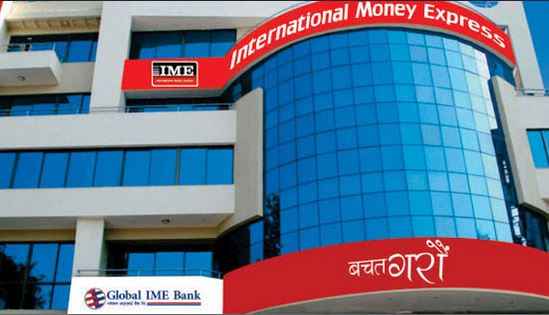
KATHMANDU: Until two years ago, the term ‘Big Merger’ heated up the financial market. In fact, this term was on the lips of all those interested in the financial sector as the government had adopted policy to encourage merger and acquisitions between banks and financial institutions (BFIs).
The government raised the issue on merger between BFIs in the budget statement of the Fiscal Year 2076-77. Those in the bank and financial sector even anticipated that the central bank could now start forcing banks to merge.
The central bank, on the other hand, promoted spontaneous mergers between banks and encouraged banks for ‘big merger’ assuring various incentives and facilities to those entering into merger and acquisition.
Not to mention, the then Global IME Bank and Janata Bank Nepal announced the merger. With the initial merger agreement, the two entities gave momentum to integrated transaction. Eventually, the two commercial banks merged to form the Global IME Bank, largest commercial bank of the country.
This merger brought a kind of wave in the economic sector. Global IME Bank, formed after the merger, became the largest bank in the country in terms of many indicators.
However, the path to becoming number one commercial bank was not so easy for Global IME Bank. The success story of Global IME Bank, which has come this far today, is linked to history of remittance in Nepal.
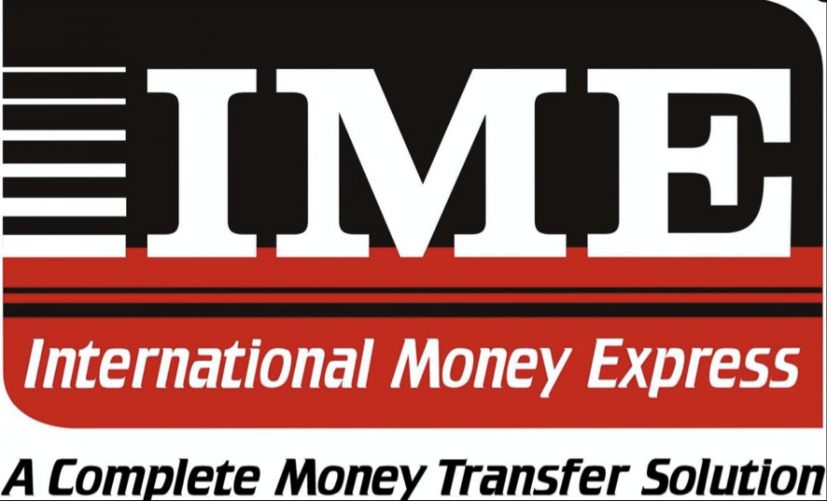
After Nepal opened Malaysia for foreign employment in 2001, many Nepalis travelled the South Asian nation in pursuit of job. Nepalis there were compelled to send money to their homeland through ‘Hundi’ due to the unavailability of a formal channel to send remittance to the country.
As sending money via Hundi was costlier and operators of such channels were informal, Nepali migrant workers in Malaysia were cheated many times. Meanwhile, the Nepal Rastra Bank (NRB) also became concerned as the flow of money through informal channels was increasing.
Chandra Prasad Dhakal, chairman of Global IME Bank, tried to turn this issue/problem into an opportunity, the same year. He had the experience of being an agent of money transfer company ‘Express’ for about a year. Express was the distributor of the UAE Exchange.
Based on the same experience, Dhakal submitted a proposal at the central bank to open the International Money Express (IME). Dr Tilak Rawal-led Nepal Rastra Bank readily accepted Dhakal’s proposal and allowed operation of IME.
Today, IME has become synonymous with remittances. However, early days were not easy for IME as the company had to compete with commercial banks doing remittance business.
As competing with banks was not that easy, Dhakal thought of starting a bank or financial institution so that remittances that enters through IME could saved it the company’s own financial institution and that IME could compete with existing banks. Ultimately, Dhakal went for starting a commercial bank.
As commercial banks had their head offices only in Kathmandu then, the central bank had adopted a policy to allow operation of new banks only beyond Kathmandu.
“We, along with 18 promoters, applied for the registration of Global Bank with head office in Birgunj,” recalls Dhakal. Shortly after the application was submitted, the Nepal Rastra Bank changed its policy and allowed new banks to establish their head office in Kathmandu. After that, Global Bank got operational license with its head office in Kathmandu.
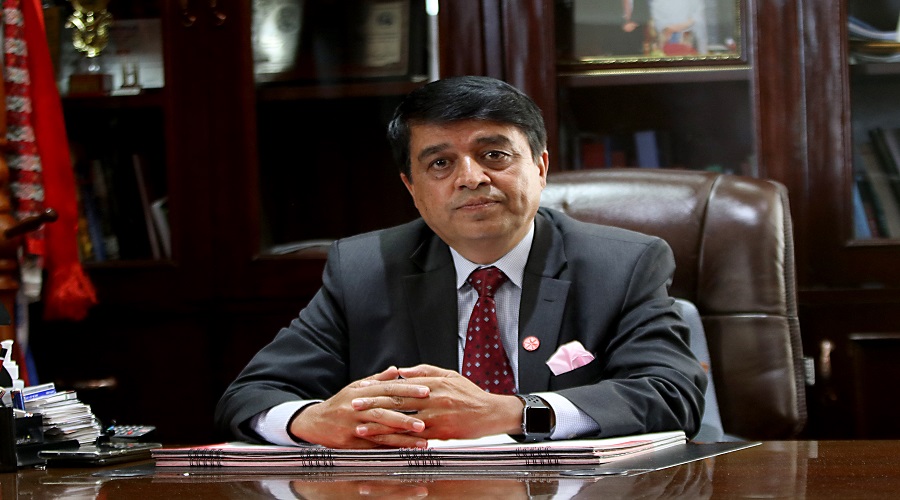
The IME Finance and Global Bank were doing business separately. NRB had adopted a policy of merging banks and financial institutions with cross holdings, i.e. having the shares in more than one institution. IME became the first to implement this policy and the IME Finance and Global Bank got merged.
Global IME Bank was started in 2012 following merger between the then Global Bank, IME Finance and Lord Buddha Finance. Prior to that, Global Bank was established in 2007 as a ‘A’ class commercial bank.
At that time, Global Bank, which was established with a paid-up capital of Rs 1 billion, was moving ahead by merging with other institutions and increasing its capital.
Global IME Bank: A totality of 18 institutions
Global IME Bank, the country’s largest commercial bank, was into merger and acquisition tendency from initial days of the ban’s establishment. In the 12 years since its inception, 17 institutions, except the IME, have merged with the bank.
Before becoming the country’s largest commercial bank, Global IME Bank, the bank incorporated 17 banks and financial institutions, including two commercial banks. Global IME Bank and Commerce and Trust Bank, along with remaining 15 development banks and finance companies got merged with each other.
Gulmi Development Bank, Social Development Bank, Reliable Development Bank, Pacific Development Bank, Consumer Development Bank, Triveni Development Bank have merged with the Global IME Bank.
Similarly, Similarly, Dry Development Bank, Bright Development Bank, Public Development Bank and Siddhartha Development Bank have also joined the Global IME Bank. Likewise, IME Finance, Lord Buddha Finance, Shubhalakshmi Finance and Nepal Awas Finance have also merged with the Global IME Bank.
First in terms of implementing government policies
Dhakal, who is also the senior vice-president (waiting president) of the Federation of Nepalese Chambers of Commerce and Industry (FNCCI), an umbrella organization of the private sector, says that he gives priority to three things while doing any work: state policy, public interest and professionalism. “My first priority is to follow the policy of the government. We have always been at the forefront in implementing state policy,” said Dhakal.
Dhakal merged IME Finance and Global Bank as soon as the cross holding policy was introduced. After the central bank raised paid-up capital of commercial banks from Rs 2 billion to Rs 8 billion, Global IME Bank was the first commercial bank to implement this policy as well.
Chief Executive Officer (CEO) of the bank Ratnaraj Bajracharya also said that the Global IME Bank team will always be at the forefront in following the policy of the government. He said that the bank will also be at the forefront in terms of institutional good governance and transparency.
Similarly, Deputy Chief Executive Officer (Deputy CEO) Surendra Raj Regmi, who is also in charge of the Bank’s Information Officer, said, “We are always in the forefront of expanding branches in rural areas or investing in various directed sectors, providing refinancing to customers, rescheduling and restructuring loans of customers affected by COVID-19.”
There has been no big merger of other banks since Global IME. Some of the merged organizations are facing many problems which confirms that the merger of big banks is not easy.
When financial institutions merge, the main problem is with management of human resources. After the merger, human resource management becomes challenging as there can be differences in opinion between the employees of the two organizations on various issues. But Global IME Bank has effectively managed human resources of different entities that got merged with the bank.
Peculiar identity in the financial sector
Global IME Bank has become a successful bank in creating a distinct identity in the financial sector. The bank is now the largest bank in the country in terms of paid-up capital, branch network and other indicators.
“We have created a distinct and special identity in the industry. Bank’s founding shareholders, chairman and board of directors, chief executive officers, management and staff have contributed greatly to the bank’s success,” said deputy CEO of the bank Regmi.
At present, Global IME Bank has a paid up capital reserve of Rs 21.63 billion, core capital of Rs 30.9 billion, loan portfolio of Rs 265.7 billion and a customer base of 2.67 million.
The bank has more than 3000 direct employees while a large number of people are also employed indirectly.
The bank is serving its customers from more than 851 service centers including 77 district offices in the country and three foreign representative offices abroad.
The bank has 287 branches, 253 ATMs, 263 branchless banking services, 48 extensions and revenue collection counters.
Strategy to spread abroad
Global IME Bank has adopted a strategy of reaching out to both large entrepreneurs as well as small entrepreneurs with the slogan ‘Bank for All’ and the bank is making investments accordingly.
The bank, which has reached 77 districts of Nepal, is planning to expand its branch in the remaining one district in the near future. Similarly, the bank has adopted a strategy to expand its network even abroad.
The bank currently has liaison offices in India, the United Kingdom and Australia while branches are being opened in other countries as well, as per Chairman Dhakal.
“We all want to invest in diverse sectors in Nepal. We are the lead investor in Betan Karnali Hydropower and will continue to expand our investment in other big projects as well,” he said.
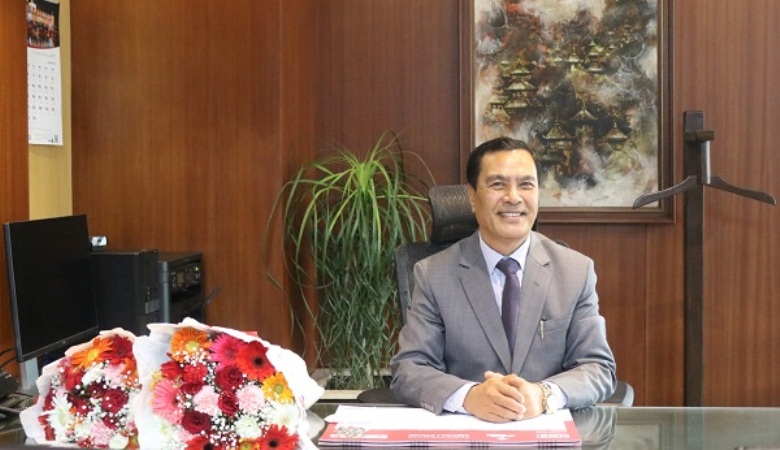
Internal planning of the bank
CEO Bajracharya said that work is being done as per the bank’s plan to reduce expenses and increase revenue. According to him, ‘Vision-2025’ has been formulated and implemented for that to execute planning of the bank and the vision paper incorporate various issues including business digitization.
Accordingly, the bank has a strategy to double its business by 2025 by making the highest use of technology. Even if the business doubles, the number of employees will not double, says CEO Bajracharya.
Last year, Global IME Bank was also at the forefront of savings deposit growth. Of the Rs 50 billion increase in deposits, Rs 25 billion was only in savings accounts. Even today, the savings deposit of the bank is over Rs 102 billion.
According to him, the bank has 32 percent in institutional deposits and Rs 262 billion in credit investment.
CEO Bajracharya said that only 15-20 branches will be expanded in the country in next few years. He mentioned that the business will be doubled by reducing the number of employees through maximum use of technology by 2025. “By connecting customers to digital transactions, they no longer have to go to the bank. Turning the counter staff into a sales force increases our profits,” he said.
When digital transactions take place, fees for customer will be reduced in one hand while bank’s manpower expenditure will be reduced to the next, opines Bajracharya.
Panduan Gaul Buat Cari Situs Slot Online yang Cuan Banget: Aman, Lancar, dan Gampang Maxwin
Di era digital yang makin modern, main game online udah jadi bagian dari gaya hidup. Salah satu genre yang paling rame diminati adalah slot online. Bukan cuma seru dan menghibur, game slot online juga bisa kasih peluang buat dapetin cuan beneran. Tapi hati-hati, nggak semua situs slot itu aman dan fair. Makanya, artikel ini bakal bantu lo cari situs slot yang beneran gacor, stabil, dan bisa jadi jalan ninja lo buat dapet maxwin hari ini.
Kenapa Slot Online Disukai Banyak Orang?
Slot online punya daya tarik sendiri yang bikin orang betah mainin. Beda sama game judi lain yang butuh strategi dan perhitungan rumit, game slotonline.cyou simpel tapi penuh kejutan. Ini dia beberapa alasannya:
- Main Gampang: Tinggal tekan tombol spin, gak pake mikir strategi aneh-aneh.
- Visual dan Tema Keren: Banyak pilihan desain, dari tema fantasi, sejarah, sampai anime Jepang pun ada.
- Jackpot Besar: Sekali pasang di sbobet bisa jadi jalan menuju cuan gede, terutama kalau dapet fitur bonus atau free spin.
- Praktis dan Fleksibel: Bisa dimainin dari mana aja, cukup modal HP dan koneksi internet aja udah bisa spin sepanjang hari.
Ciri-ciri Situs Slot yang Gacor dan Layak Dimainin
Biar gak salah pilih tempat main, penting banget buat kenali tanda-tanda situs slot yang worth it. Ini dia kriterianya:
1. RTP Tinggi
RTP alias Return to Player nunjukin seberapa besar persentase uang yang bakal dibalikin ke pemain. Semakin tinggi RTP, makin besar juga peluang lo buat menang. Rekomendasi ideal? Cari game dengan RTP di atas 96%. Itu udah tanda slotnya cukup royal buat ngasih kemenangan.
2. Server Stabil dan Kenceng
Nggak ada yang lebih nyebelin dari slot yang ngelag di tengah jalan. Server mahjongslot yang stabil penting biar lo bisa nikmatin permainan tanpa hambatan. Nggak cuma itu, server yang bagus juga lebih aman dari gangguan eksternal kayak cheat atau manipulasi.
3. Banyak Bonus dan Fitur Tambahan
Game slot yang keren biasanya punya fitur menarik kayak wild, scatter, free spin, multiplier, dan mini-game bonus. Semua itu bisa ningkatin peluang lo buat menang lebih banyak tanpa harus nambah taruhan gede.
4. Mobile-Friendly
Zaman sekarang siapa sih yang nggak main dari HP? Situs slotmahjong yang bisa diakses dari semua perangkat, baik Android maupun iOS, jadi nilai plus. Tampilan yang pas di layar kecil, tombol yang mudah dijangkau, dan loading cepat jadi indikator utama kenyamanan.
Gimana Cara Tau Slot Itu Gacor?
Beberapa game slot udah terkenal gacor di kalangan komunitas online. Tapi kalau lo mau nilai sendiri, ini indikator utamanya:
- Volatilitas Tinggi: Slot jenis ini ngasih kemenangan gede tapi nggak terlalu sering. Cocok buat lo yang sabar dan pengen cuan serius.
- Beli Bonus: Ada opsi buat langsung beli free spin atau masuk ke mode bonus. Ini bisa potong waktu nunggu dan langsung ke bagian seru.
- Event Jackpot: Situs pgslot punya event jackpot harian atau mingguan yang bikin peluang lo makin besar buat menang rame-rame.
Tanda-Tanda Situs Slot Itu Terpercaya
Selain fitur permainan, lo juga harus pastiin situsnya aman. Ini beberapa poin penting:
- Lisensi Resmi: Situs mpo slot terpercaya pasti punya izin dari badan regulasi, artinya semua transaksi dan game diawasi.
- Metode Transaksi Lengkap: Bisa setor dan tarik dana lewat bank lokal, e-wallet, bahkan kripto.
- Layanan CS 24 Jam: Live chat aktif dan fast response jadi tanda situs tersebut peduli sama pemainnya.
- Ulasan Positif: Banyak pemain kasih testimoni positif, tandanya mereka puas sama pelayanan dan gameplay-nya.
Cara Main Slot Biar Gak Tekor dan Makin Cuan
Walaupun slot itu mostly soal hoki, ada beberapa strategi yang bisa bantu lo bertahan lebih lama dan dapet hasil lebih baik:
1. Tentuin Batas Modal
Sebelum mulai, lo harus tau batasan lo. Jangan main togel online asal terus-terusan tanpa kontrol. Kalo udah rugi segini, stop dulu, jangan lanjut karena nafsu.
2. Main Mode Demo Dulu
Manfaatin mode gratis slotthailand.cv buat belajar fitur game, pola scatter, dan kapan bonus sering muncul. Dari situ lo bisa nilai worth atau enggaknya game itu buat dijadiin pilihan utama.
3. Maksimalin Bonus Situs
Gunakan semua promo yang tersedia seperti welcome bonus, free spin, cashback mingguan, dan bonus deposit. Tapi inget, baca syarat dan ketentuannya dulu biar nggak zonk.
4. Catat Riwayat Main
Mulai biasain diri nyatat hasil tiap main. Game judi bola 88 mana yang sering menang, kapan waktu main yang bagus, dan game mana yang nyedot saldo terus. Ini penting buat bantu evaluasi.
Slot Online Itu Hiburan Cuan Asal Main Pinter
Banyak yang mikir slot itu judi doang. Padahal, kalau dimainin dengan cara yang sehat dan bijak, ini bisa jadi sarana hiburan yang seru dan kadang menguntungkan. Visual yang keren, efek suara yang menggelegar, plus sensasi dapet scatter ketiga itu nggak bisa dilawan. Apalagi kalau dapet free spin yang hasilnya jackpot, wah senangnya nggak ketulungan!
Waspada! Hindari Hal-Hal Ini Pas Main Slot
- Jangan Kejar Kekalahan: Kalau udah kalah, istirahat dulu. Jangan coba balikin semua dalam sekali spin, bisa tambah rugi.
- Hindari Situs Abal-Abal: Situs yang nggak punya izin atau terlalu banyak janji manis biasanya ngejebak. Mending cari yang udah terbukti.
- Promo Menyesatkan: Janji ‘menang pasti’ itu jebakan. Gak ada slot yang bisa kasih jaminan 100% menang. Selalu baca detail dan logika penawarannya.
Slot Online Bisa Jadi Ladang Cuan Kalau Main Cerdas
Slot online bukan cuma hiburan receh. Kalau lo main di tempat yang tepat, ngerti cara bacanya, dan tahu kapan harus gas dan kapan harus rem, game ini bisa kasih pengalaman yang asyik plus peluang dapet duit tambahan. Yang penting, jangan kebablasan dan tetap enjoy prosesnya. Pilih situs yang fair, aman, dan punya reputasi bagus. Dari situ, tinggal spin santai dan tunggu hoki dateng!
Udah siap gaspol spin hari ini? Jangan lupa main cerdas, bukan nekat. Selamat mencoba dan semoga cuan besar datang ke lo!



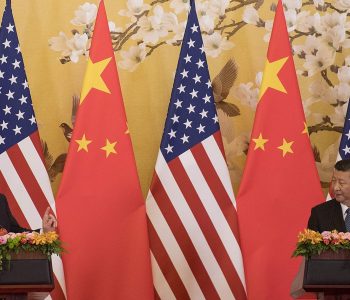

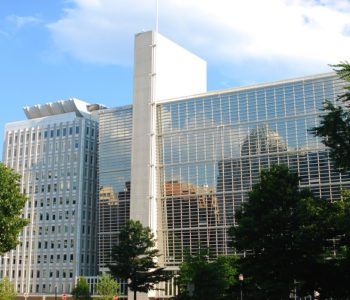
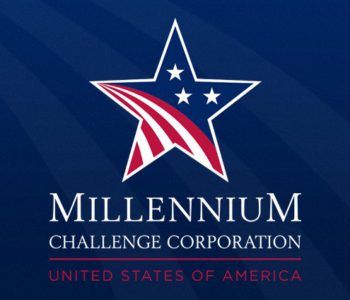


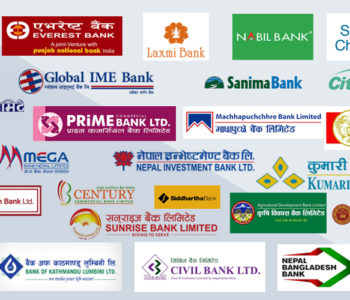
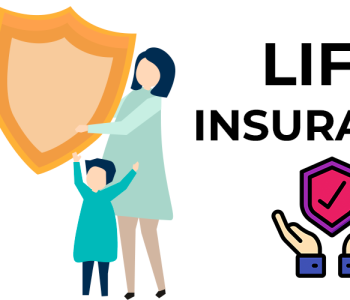

Can the trend of mergers and acquisitions between banks and financial institutions in Nepal lead to a monopoly in the financial sector, potentially harming consumer choice and competition?